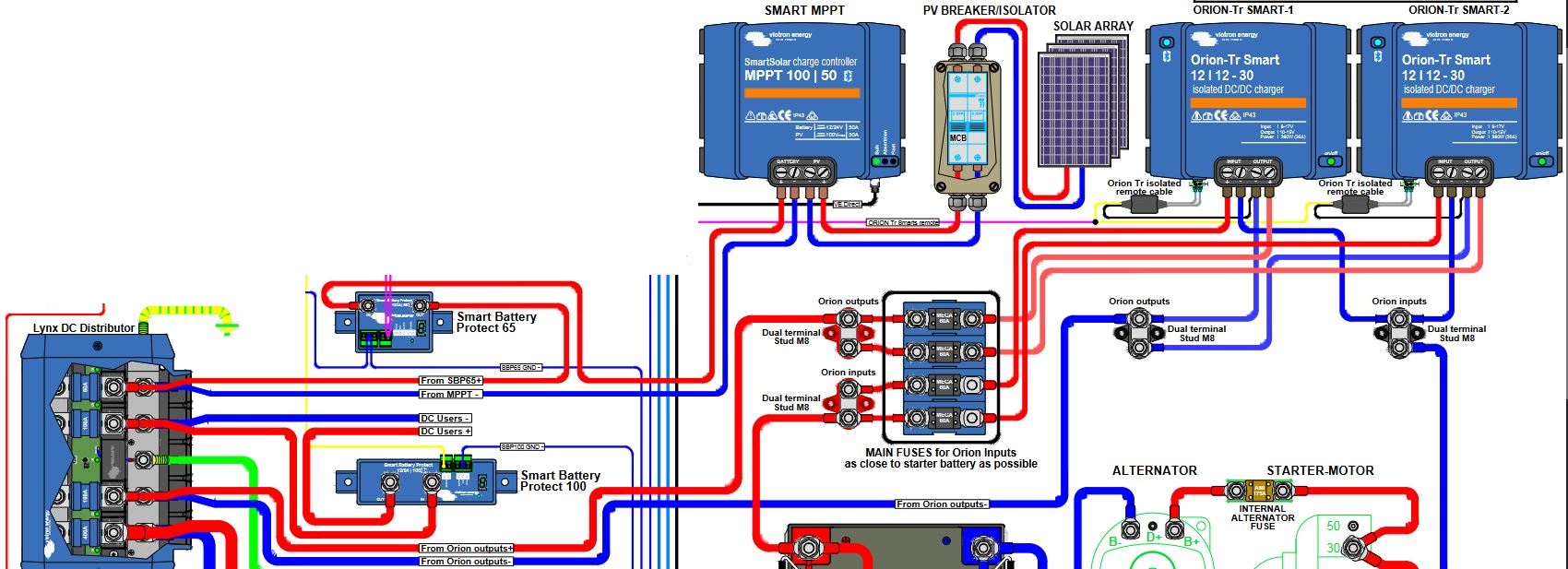Hi there, very first question out here, hoping someone can help...
We are planning to use one lynx distributor (probably with a smart shunt), but are wondering if that's possible with our intended setup? - see below questions for intended setup
My questions are:
- can I connect the 2 MPPT controllers to the one fuse holder on the lynx distributor? if that's possible, do they need to be identical in size?
- can I do the same for the DC DC chargers? Connect 2 of them to the one fuse holder in the lynx distributor? If that's possible, do they need to be identical in size?
As far as I can tell we need to connect the battery (single victron 330A lithium battery) to the left-hand side of the lynx distributor. Then we would connect the following to the 4 fuse spots:
- MPPT smart solar charge controller (for our 2 solar panels in series on the roof)
- MPPT smart solar charge controller (for our solar blanket that we intend to setup when we are parked in the shade, but can have access to the sun a few metres from the vehicle)
- Orion TR smart DC-DC charger - we are thinking of adding a second DC-DC charger as our car has a 150A alternator and we will drive most days a few hours and therefore will be charging the bulk hopefully with the alternator
- IP22 blue smart charger - we will be mostly off-grid but when we park up at a friend's place we could use this to charge the batteries via shore power without having to put in a permanent connection on the outside of the car.
- Phoenix inverter - will be used to charge our laptops at night if needed, as well as charging our headlamp batteries etc
Now, as you can see we have 5 things that I believe need to be connected to the lynx distribution module. Potentially 6 if you count the additional DC DC charger we would like to add.
I also haven't looked yet how / where the switch board we intend to add for all our 12V loads needs to be in the wiring diagram, does this need to go into a slot on the lynx distributor too? ( we won't have any 230V loads as we will plug our laptops directly into the inverter and don't have any other appliances that run on 230V)
We also intend to add a Cerbo GX with GX Touch 50. I haven't looked at how to add that to the system, but assume it doesn't need to be in the lynx distributor....
We are building a small campervan with not too much electrical needs, but we like to be able to stay off-grid for extended periods, including parking her up and going away for a week-long hike (hence the chunky battery). We are very limited in space (and weight) so would prefer not to have to add a second lynx distributor if we can avoid it :-)
(oh and sorry admins, I selected the topic 'lynx shunt' as there is nothing suitable to select as lynx or lynx distributor, don't seem to exist as a topic....)

